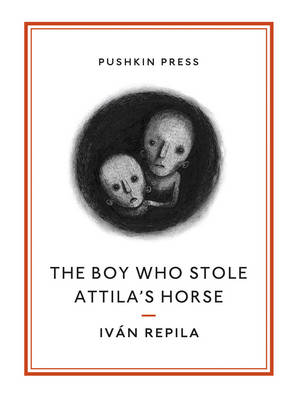 The South African writer Ivan Vladislavić now has the most titles of any author on And Other Stories‘ roster; and when they keep plucking gems like this from his bibliography, it’s not hard to see why. The Folly is Vladislavić’s first novel, originally published in 1993 towards the end of apartheid; it’s as delicious and disturbing a tale of one succumbing to another’s illusions as you might wish.
The South African writer Ivan Vladislavić now has the most titles of any author on And Other Stories‘ roster; and when they keep plucking gems like this from his bibliography, it’s not hard to see why. The Folly is Vladislavić’s first novel, originally published in 1993 towards the end of apartheid; it’s as delicious and disturbing a tale of one succumbing to another’s illusions as you might wish.
We are introduced to Mr and Mrs Malgas, who live a mundane suburban existence:
The frog-mug had been bought at a sale of factory rejects, and for that reason it was Mrs Malgas’s favourite, warts and all. Mr Malgas thought it was in bad taste. He stirred the coffee, scraping the frog on the murky bottom maliciously with the spoon. He fished the tea-bag out of his own mug, which was chocolate-brown and had I ♥ DIY printed on it in biscuit. He thought this one was gimmicky too, but it had been a Father’s Day present from his spouse and he used it out of a sense of duty.
The couple watch a shanty burning on the evening news, but the distance of the television (and the cosseting effect of that Vladislavić’s prose) ensures that this doesn’t intrude unduly into their lives. They are known to us only as ‘Mr’ and ‘Mrs’, which increases the sense of them as cartoonish figures, but also – subtly – denies them the dignity of their own names.
A mysterious figure called Nieuwenhuizen moves on to the plot next to the Malgases’ house and sets up camp, using the rubbish around him for furniture. After a spell of observing him for a distance, Mr Malgas goes up to Nieuwenhuizen to find out what he’s doing. It turns out that the newcomer is building a house, though he hasn’t started yet. The owner of a hardware shop, Mr Malgas is inspired by this, and is soon helping Nieuwenhuizen out: clearing the ground to lay down a grid pattern, hammering in nails for cat’s-cradles of string that somehow correspond to the great plan… Actually, Mr Malgas does rather more than help out, and since Nieuwenhuizen insists on being called ‘Father’ (and Mr is quite happy to oblige), you can imagine what sort of relationship is established between them.
To recall another And Other Stories novel, Nieuwenhuizen is like Joe, the salesman from Helen DeWitt’s Lightning Rods, in his ability to manipulate others through language and rhetoric. Vladislavić’s approach is a little different: where DeWitt immerses her readers in Joe’s business-speak and does not allow them to gain purchase outside it, in The Folly we see Mr Malgas’s willing capitulation; Nieuwenhuizen’s contempt for him; and Mrs Malgas looking on aghast. As a result, we don’t quite get caught up in Mr’s enthusiasm, but we are swept along in the wake of its unstoppable tide, and we fear where it might end up.
As the novel progresses, the idea of Nieuwenhuizen’s house grows stronger – stronger than (or perhaps indistinguishable from) the reality. Here, The Folly put me in mind of The Boy Who Stole Attila’s Horse by Iván Repila, in the blurring of its imaginative and physical space. But the transformative power of The Folly is all its own. Let this novel whisper in your ear, and listen closely.
Book details (Foyles affiliate links)
The Folly (1993) by Ivan Vladislavić, And Other Stories paperback
Lightning Rods (2011) by Helen DeWitt, And Other Stories paperback
The Boy Who Stole Attila’s Horse (2013) by Iván Repila, tr. Sophie Hughes (2015), Pushkin Press paperback
Like this:
Like Loading...


Recent Comments